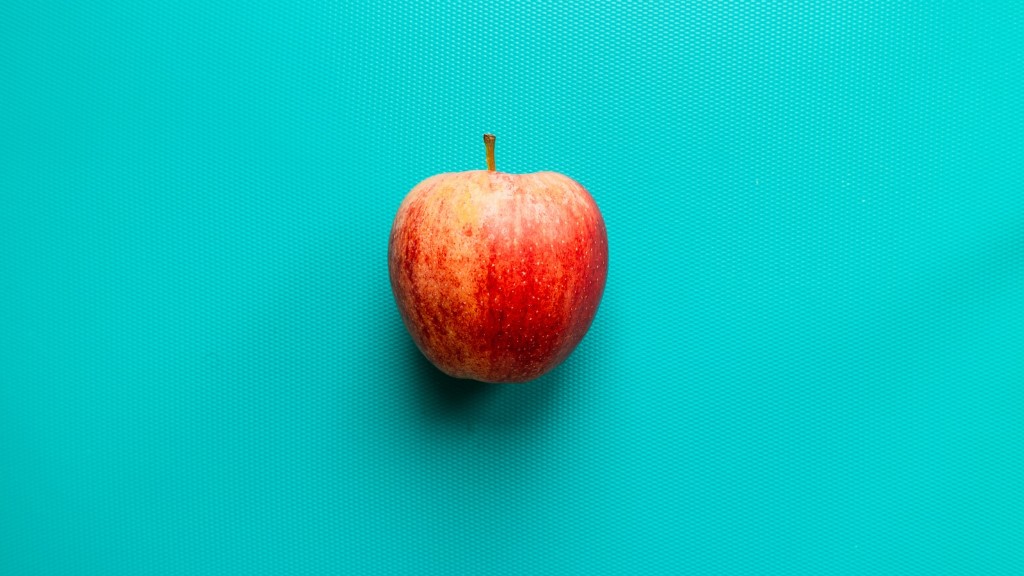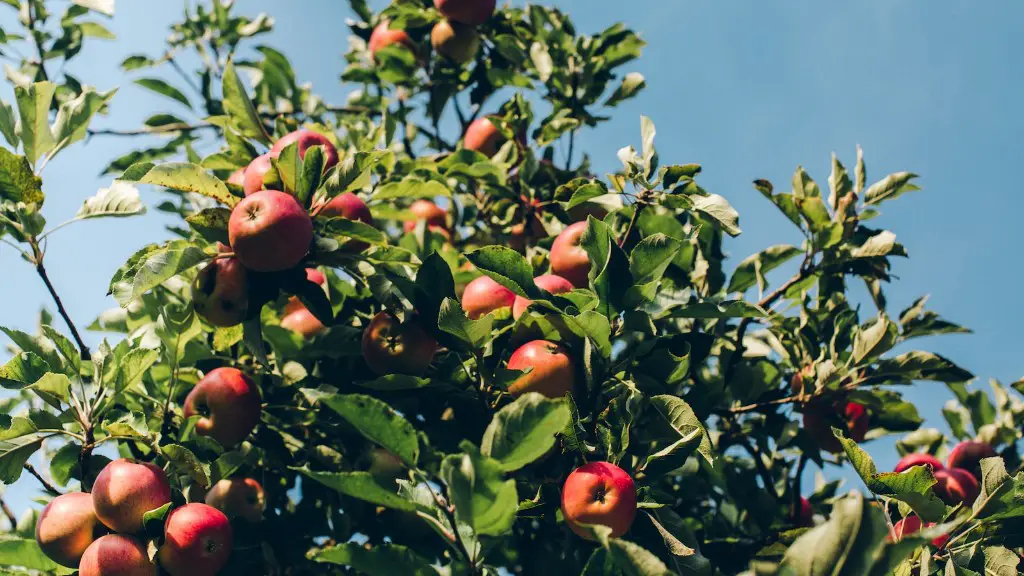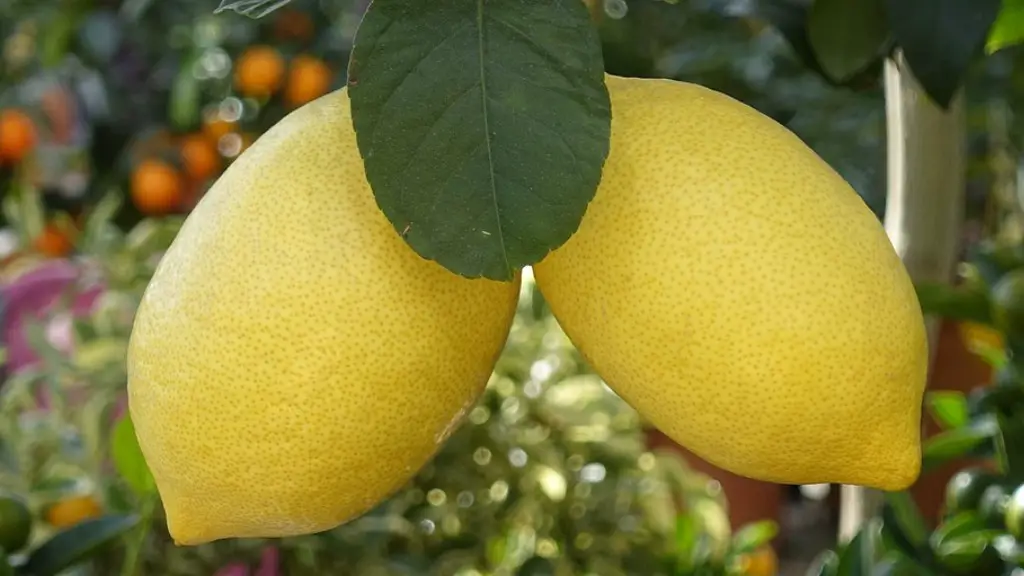Many gardeners may experience a frustrating reality when their apple trees don’t bloom. Without flowers, the apple tree will not bear any fruit, leading home gardeners to ask why their apple tree won’t bloom. The causes of this may be due to inadequate sunlight, too much rain, extreme temperatures, lack of pollination, or a combination of these factors.
For apple trees to bloom, they need a minimum of 6 hours of sunlight each day. Sunlight is a necessary source of energy for the tree. Without it, the apple tree becomes starved for energy, leading it to focus its efforts on survival with no energy left over for flower production.
Too much rainfall can reduce fruit production by increasing the tree’s susceptibility to fungal diseases and by adding too much moisture to soil. This creates an ideal environment for fungi to breed and disrupt the development of apple flowers. To ensure that apple trees produce flowers, gardeners need to make sure they monitor rainfall and take precautionary measures, such as adding mulch or compost, to reduce moisture in soil.
Extreme temperatures are also a factor in apple tree bloom. Temperatures below 25 degrees Fahrenheit can cause a decrease in flower production. At colder temperatures, apple trees will become dormant for winter and won’t be able to produce any fruit until spring. Gardeners should take note of extreme temperatures and either place cold frames around the tree or provide frost protection to mitigate the effect.
Pollination is another factor that influences the bloom of an apple tree. Many types of apple trees require cross-pollination, meaning nearby trees of a different variety should be present for successful fruit production. If no other trees are present for cross-pollination, gardeners need to use other resources to ensure their apple tree will bloom, such as artificial pollinators or manual pollination with a cotton swab.
Finally, a lack of proper fertilization can lead to the tree failing to produce fruit. Applying a balanced fertilizer during the flowering period will help ensure the tree gets the essential nutrients it needs. Fertilizing too much, however, can lead to over-fertilization, stunting apple tree flower production.
In summary, apple trees may not bloom if they lack the necessary light energy, if there is too much rainfall, if temperatures drop too low, if pollination is never achieved, or if fertilization is insufficient. Therefore, it is important for gardeners to be mindful of the conditions of their environment and make any necessary adjustments in order to encourage blooming.
Sunlight for Apple Tree Blooms
Sunlight is integral for apple trees to bloom successfully. Even with natural sunshine, it may still be insufficient for optimal fruit production. To compensate for this, gardeners can place the tree in an area with more sunlight exposure or use a reflective surface to further direct sunlight onto the tree. This will ensure the tree receives the amount of energy it needs to produce fruit.
Replanting the apple tree in a sunnier location has multiple benefits. It will not only bolster apple tree production, but additional exposure to the sun will also reduce the risk of frost damage. Frost can easily be lethal to sensitive blooms, but by planting in an area with more sunlight, the flowers will have assistance in surviving any chilly spring evenings.
If the initial relocating of the tree isn’t viable, gardeners have other strategies they can use to increase the amount of sunlight the tree receives. Reflective surfaces, such as mirrors or aluminum foil, can be used to redirect more light towards the tree, adding to the natural sunlight. This method can also be used to reach locations that may be difficult to access with standard gardening tools.
In addition to increasing the available sunlight for an apple tree, gardeners can also use shade cloths or other net covers to block out any excess light. Even with natural sunlight, there can still be too much heat for the tree to manage. By installing protection from the sun, the tree can reap the benefits of photographsynthesis without the unwelcome negative effects of extreme temperatures.
Finally, gardeners should also take notice of the time of day when the sunlight is best for apple tree blooms. The early morning and late evening hours tend to have the most favorable temperatures and least amount of harmful UV rays. These times are ideal for apple tree bloom and certain other blooms, such as roses.
Apple Tree Pollination
It is essential that apple tree flowers are pollinated for them to bear fruit. Some apple trees are self-fertile, meaning they can pollinate themselves, while some require cross-pollination from other varieties of apple trees. If there aren’t any apple trees nearby for cross-pollination, the tree will not bloom, so the gardener must take steps to ensure that it does.
Artificial pollination is one such method. Common options include using a soft-bristled paintbrush or a cotton swab to manually transfer pollen from one flower to another. Gardeners should work quickly and carefully as some apple trees produce only a few flowers and should not be messed with for too long.
Insects are another great source of apple tree pollination. Bees and other flying insects are the most effective, as they can transfer pollen efficiently. To get the most out of the flies and bees around your home, ensure they have access to flowers and water by planting nearby plants and keeping surrounding foliage watered. Planting next to a water body is a great way to attract bees and other insects, as they need water sources nearby to sustain themselves.
If pollination is still unsuccessful, consider chemical pollination. This method is considered the last resort for pollinating apple trees, as it requires specialized materials and expertise. The chemical is applied to the flowers in a mist, ensuring successful pollination.
In addition to the previously listed methods, some gardeners opt to use poles. A lightweight, short pole can be attached to the trunk of the apple tree, allowing insects to access the tree’s top branches. This can increase the likelihood of pollination, as the insects are able to reach areas they otherwise couldn’t have.
Overall, pollinating apple trees is essential for successful fruit production. Gardeners should use strategies such as artificial pollination, natural pollination via insects, or chemical pollination to ensure the apple tree is able to bloom.
Fertilizing Apple Trees for Blooms
Fertilizing apple trees is a key step in ensuring blooms in the future. A balanced fertilizer with a ratio of 10-10-10 or equivalent is needed for optimal bloom, as the fertilizer provides essential nutrients for flower production. Over-fertilizing, however, can be damaging, so it is important to only fertilize once or twice per growing season.
Gardeners should apply the fertilizer during the flowering phase of the apple tree’s growth. This phase takes place during early spring, as the tree defrosts after winter dormancy. Fertilizer should never be administered before or during the freezing period, as this can damage further delay flower production.
When applying fertilizer, it is crucial that gardeners distribute it evenly and rake it slightly into the soil. If it isn’t applied properly, the fertilizer will not produce the intended effect and may even be detrimental. Most importantly, however, gardeners must take care to avoid applying too much to the tree, as apple trees have a sensitivity to higher levels of fertilizer.
To supplement the fertilizer, gardeners should rotate the tree’s soil in order to replenish the soil with organic material. Introducing compost or mulch to an apple tree’s soil helps to improve the fertilizer’s effect, as natural material has more beneficial nutrients that can be beneficial to the tree’s growth. Additionally, rotating the soil will ensure the roots of the tree are kept aerated and moist.
In addition to soil rotation, gardeners should also monitor the water levels around their apple tree. Too much water can weaken the tree, reducing the effects of the fertilizer, while too little can cause a shortage of the beneficial elements in the soil, leading to a decline in bloom production. Therefore, gardeners should keep an eye on their tree’s surroundings and adjust the water levels as needed.
Extreme Temperatures and Apple Tree Blooms
Extreme temperatures can be damaging to apple tree blooms. During spring, blossom waves can be affected by temperatures above 70 degrees Fahrenheit, preventing the tree from being able to produce fruit. Likewise, temperatures below 25 degrees Fahrenheit will degrade the apple blossoms and can potentially cause the flowers to die.
Gardeners must be mindful of the temperatures around the apple tree and adjust the tree’s environment accordingly. Cold frames offer great protection against frost, keeping temperatures around the tree relatively constant and protecting against any surprises sudden swings in temperature.
Gardening mulch is a great way to mitigate the effects of extreme temperatures. By laying down a layer of mulch around the base of the tree, the topsoil is insulated and kept at a consistent temperature. This will increase the chances of successful apple blossoms, as it reduces the variance of temperature around the tree.
Tools such as thermometers may also be used to measure the temperature around the apple tree. They can be especially useful for determining when optimal blooming temperatures are reached and when potentially damaging temperatures are reached. By monitoring the temperature and taking note of any drastic changes, gardeners can be prepared for any temperature adjustments that may need to be made.
Finally, consider relocating the apple tree if temperatures are consistently becoming extreme in its current area. This may not be an option for all gardeners, especially if the tree is too big or is immovable, but can be effective in saving apple tree flowers.
Monitoring Rainfall Around Apple Trees
Rainwater is essential for successful apple tree blooms, but too much can have adverse effects. Excessive rainfall can lead to increased fungus growth, which can inhibit the apple tree’s ability to produce fruit. To reduce the effect of excessive rainfall, gardeners should lay down a layer of mulch around the tree in order to limit the amount of moisture present in the soil.
If more direct control is needed, rain barrels can be installed around the tree. This will give gardeners the ability to monitor the water they are providing to the apple tree, further reducing unwanted fungus growth. It can also be used to providedirited water during hot, dry periods.
In addition, a layer of gravel around the base of the tree can increase drainage and keep the soil around the tree drier. This will help the apple tree sustain itself through periods of excessive rain, allowing it to focus energy towards fruit production.
Finally, it may be beneficial to provide the tree with shade during rainy periods. Apple tree flowers are sensitive to wet conditions, so providing an environment that is comfortable for the tree is essential for bloom production. By using large umbrellas or rain tarps, gardeners can regulate the temperature and rainwater levels around the tree by adjusting the shading material’s position.
In conclusion, rainfall is necessary for fruit production, but too much can harm the tree’s flower production. Gardeners should take the necessary steps to monitor and control the amount of rain their apple tree receives in order to ensure successful blooms.



